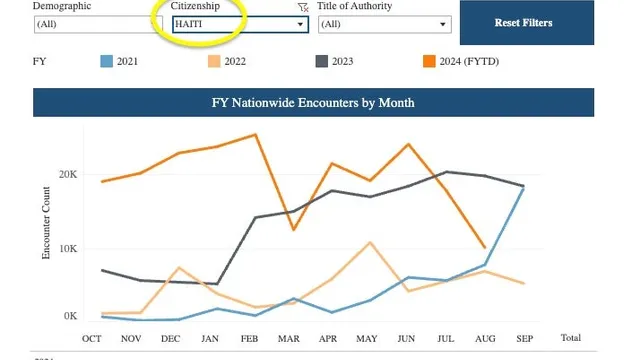
Haitians Relocate to Springfield: Understanding the Reasons and Legality
2024-09-25 00:00- Springfield, Ohio has experienced a surge in its population due to an influx of Haitian migrants, many of whom are in various immigration statuses.
- The Biden-Harris administration's new legal pathways for migrants have led to over 350,000 Haitians arriving in the U.S. since January 2023.
- The situation has prompted discussions about the impact on local housing and economies, highlighting both challenges and opportunities for the community.
Express your sentiment!
Insights
Springfield, Ohio has seen a significant increase in its population due to an influx of Haitian migrants, many of whom are in various immigration statuses. The city’s migrant population is estimated to be between 12,000 and 15,000, with a notable number arriving under the Temporary Protected Status (TPS) program. This program allows individuals from designated countries to remain in the U.S. temporarily due to unsafe conditions in their home countries. The Biden-Harris administration's announcement in January 2023 of new legal pathways for migrants has led to a sharp rise in Haitian arrivals, with over 350,000 Haitians entering the U.S. since the program's launch. Many of these migrants are classified as refugees, as they face persecution risks in Haiti. Springfield officials describe them as legal immigrants, emphasizing their eligibility for TPS and the Immigration Parole Program. The local government has acknowledged the challenges posed by the sudden population increase, including housing shortages and potential impacts on local economies. One migrant shared experiences of overcrowded living conditions, highlighting the struggle for affordable housing. Despite concerns raised by some residents, city officials attribute the influx to Springfield's lower cost of living and available job opportunities. The situation has drawn national attention, particularly during political debates, where misconceptions about the migrants have been voiced. The community's response to this demographic shift remains mixed, with ongoing discussions about integration and support for the new residents. Overall, the arrival of Haitian migrants has transformed Springfield's demographic landscape, prompting both challenges and opportunities for the city as it navigates this new reality.
Contexts
Since fiscal 2021, a significant influx of Haitians has entered the U.S., with around 16,000 migrating to Springfield, Ohio, as part of a larger trend of approximately 10 million individuals. The Department of Homeland Security has granted Temporary Protected Status to about 300,000 Haitians, allowing them to work legally despite their illegal entry, which has sparked debates over their legal status and the implications of U.S. immigration policies. Local reactions in Springfield have been mixed, with some residents expressing concerns about resource strain and crime, while others highlight the positive contributions of these immigrants. Amid anti-immigrant rhetoric from political figures like Donald Trump and JD Vance, Springfield residents have rallied to support Haitian restaurants and local organizations, converting donations into gift cards for those in need. The situation has been exacerbated by misinformation, including unfounded claims about Haitian immigrants eating pets, which have led to chaos and security concerns, including bomb threats. These threats, all hoaxes, have heightened tensions in the community, prompting increased police presence and school lockdowns. Governor Mike DeWine has emphasized the importance of Springfield's historical significance and diversity, while local advocates work to counter negative narratives and clarify misconceptions about the Haitian community, aiming to foster a more supportive environment amidst ongoing national debates on immigration.